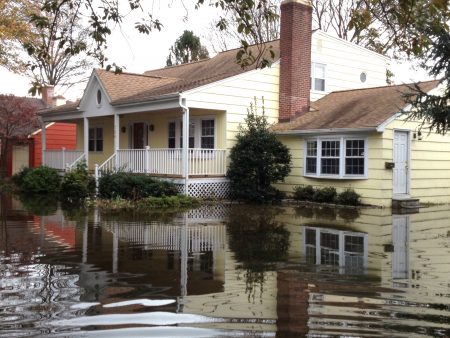February 27, 2018 – Rising sea levels, storm surges, and extreme weather events are here in the present and likely to follow us into the future as the Earth’s atmosphere and oceans continue to warm. For those living along the coastlines of the Southern United States, it already is the time when snakes and alligators start showing up in home kitchens, and not on the menu. When Hurricane Harvey struck Houston, I remembered a saying from friends of ours who lived there. “In Houston, it rains snakes and frogs,” they told me. They weren’t kidding.
And in Southern Florida after Hurricane Irma, the storm surge and rain produced alligators on roadways, water snakes in people’s backyards, and an occasional octopus swimming around in city parkades.
For those who stay behind and rebuild, there are others who have reached their limits and decided to move elsewhere. It is fair to say that climate change, extreme weather and other natural disasters rather than economic determinants will be the fuel for human migration throughout much of the remainder of the 21st century.
And as nations fail to achieve significant carbon reductions this phenomenon will accelerate not just in the United States but in almost every country impacted by rising sea levels, rising temperatures, and rising weather extremes.
Today 4 in 10 humans live 60 kilometers (37 miles) or less from the world’s oceans. More than 1 billion of us live in areas with elevations above sea level of less than 5 meters (16 feet). The vast majority of these people live in Asia. In the United States, the population living along or near the coast exceeds 130 million.
I have stated before on this site that if you want to fully comprehend the impact of climate change ask insurance underwriters. These companies that reinsure the insurer of your home measure the cost of climate change annually. They are calculators of risk and right now they are raising costs to insurance companies who provide policies to homeowners who remain in areas deemed most likely to be inundated as sea levels rise. If you are contemplating buying a beachfront property or planning to build one, the sticker shock you’ll experience for flood protection should make you think twice. And if you are not putting new construction on stilts, then you may not even qualify for these inflated premiums. Whereas insurance companies, banks, and other financial lenders act because of rising risk, it appears, to-date, that governments continue to fail at recognizing the risk to their citizens.
In doing the research background to this posting I came across an article appearing in Newsroom, a New Zealand publication. Written by Eloise Gibson, Newsroom’s environment, and science editor, and appearing on January 15th of this year, she writes about Belinda Storey, a climate risk specialist in her country that has been studying how government, insurers, and homeowners need to adapt to rising sea levels. Storey notes, “A lot of people focus on, when does the probability [of flooding] become an annual event or a daily event. But that is not the most important question…..The most important question is, when does it reach that insurance threshold?” So that threshold when insurers withdraw from the world’s coastlines is only a matter of when and not if.
Storey is working with a team of researchers at Victoria University, in Wellington, New Zealand, to create a roadmap predicting areas of greatest risk in her country. She believes that the insurance thresholds when they withdraw are much sooner than most people realize. A 10 centimeter (about a 4 inch) rise in ocean sea levels off New Zealand’s coasts turns the 1 in a century flood event into a 1 in 20 years event. And that’s just sea level rise incidents and does not include additional extreme weather storm surges which will impact New Zealand’s coastlines.
Where does the government of New Zealand, or for that matter any national government, fit into the equation of risk? Likely when the government facing the rebuilding costs of coastal infrastructure finally gives up.
States Storey, “Property effectively has a time limit on it now….the value won’t go to zero immediately, because there will still be people who want to live, work and play at the coast, even if….risks increase.” But when governments say they can no longer repair repeatedly damaged roads, and rebuild the pipes to deliver fresh water, and remove sewage, then the migration will inevitably begin.
For New Zealanders, Americans, Europeans, and many others the migration won’t be a decision driven by a lack of insurance coverage, but rather by basic Malthusian-defined needs which will go wanting as oceans rise and extreme weather events take their toll.










